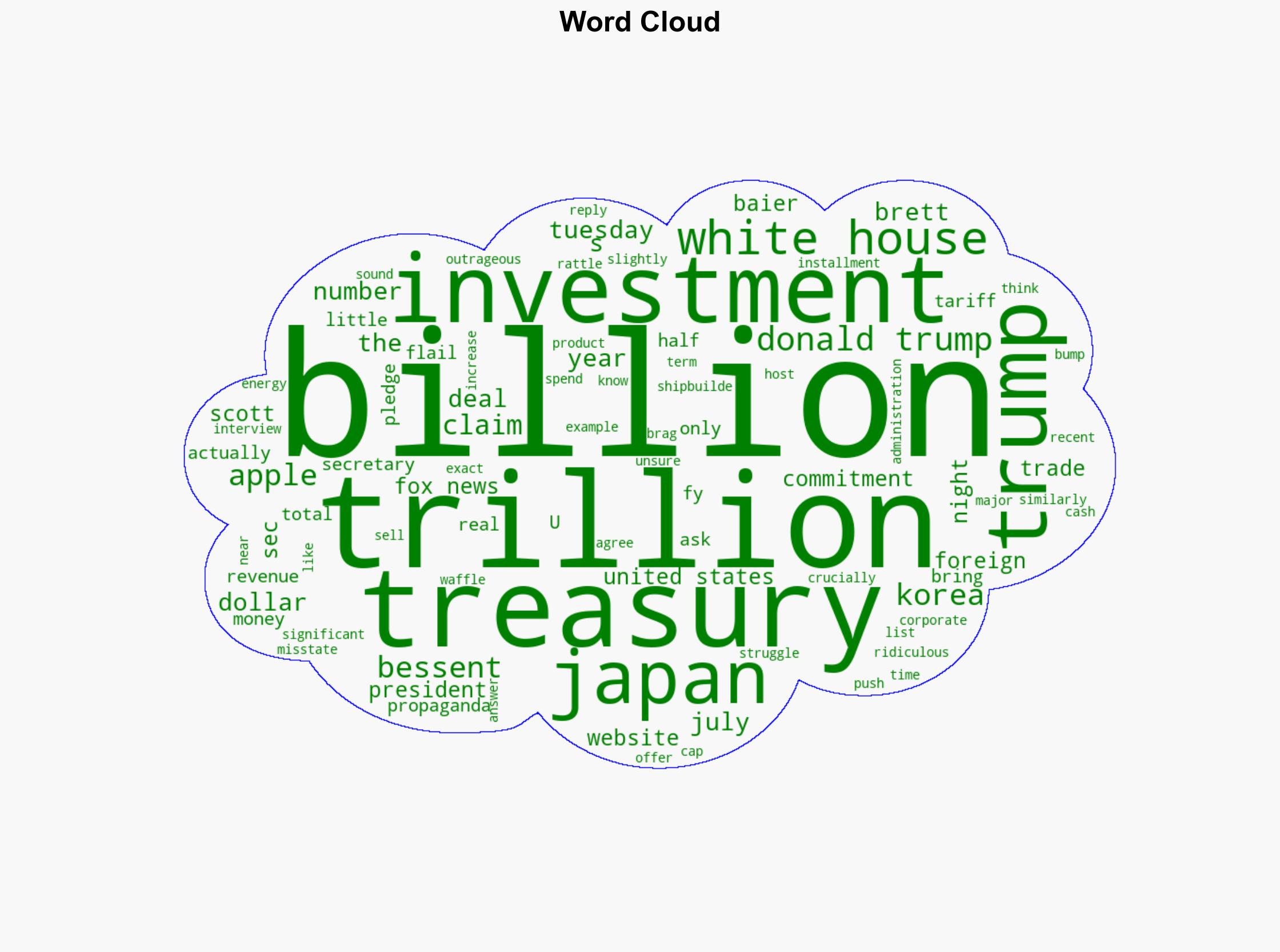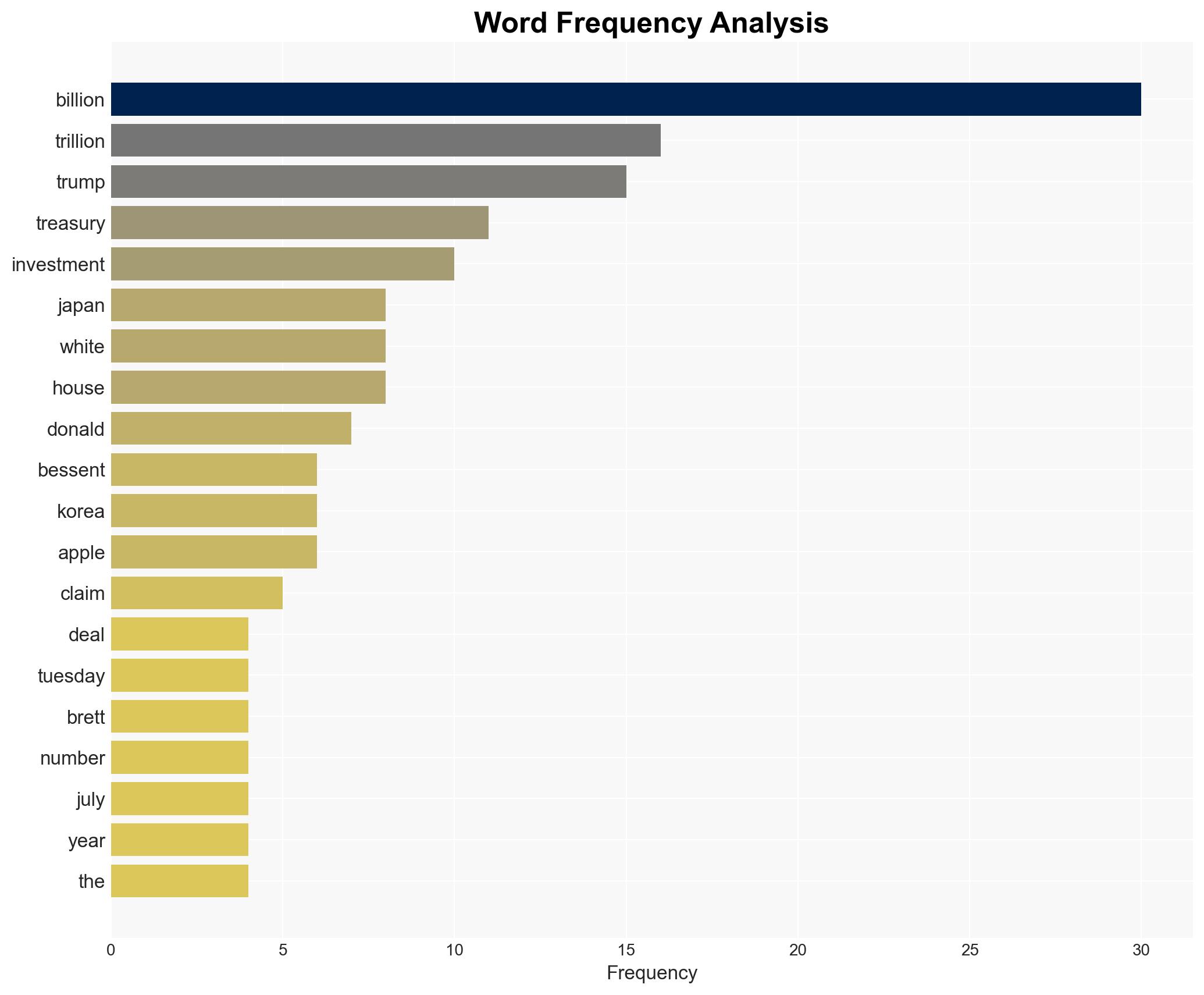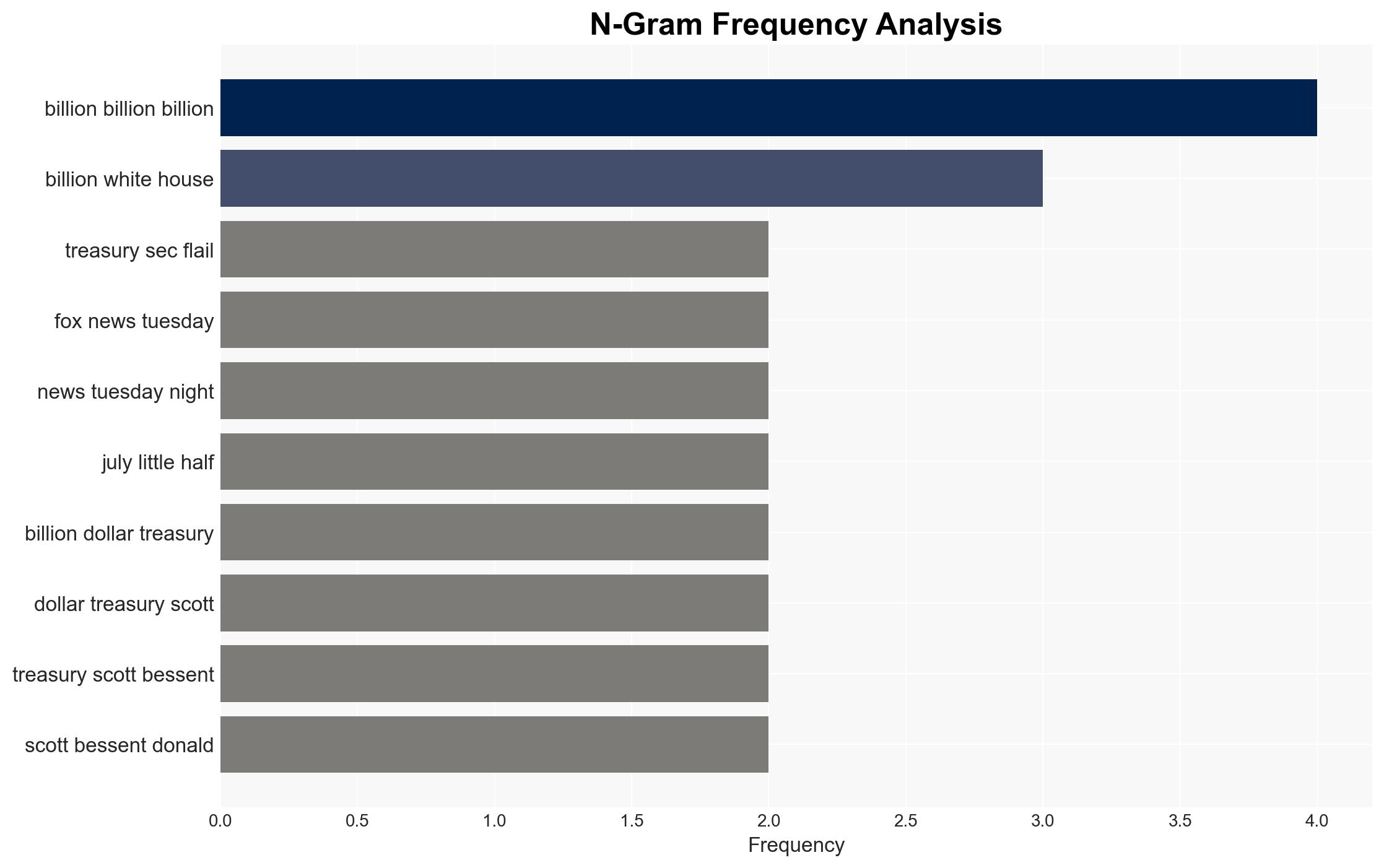Treasury Sec Flails When Asked If Trumps Foreign Investments Are Real – The New Republic
Published on: 2025-11-19
AI-powered OSINT brief from verified open sources. Automated NLP signal extraction with human verification. See our Methodology and Why WorldWideWatchers.
Intelligence Report:
1. BLUF (Bottom Line Up Front)
There is a moderate confidence level that the claims of foreign investment figures by former President Donald Trump are exaggerated and potentially misleading. The most supported hypothesis is that these figures are inflated for political gain rather than reflecting actual economic commitments. Recommended action includes increased scrutiny and verification of foreign investment claims to ensure accurate public and policy understanding.
2. Competing Hypotheses
Hypothesis 1: The foreign investment figures claimed by Trump are exaggerated and do not reflect actual commitments. This is supported by discrepancies between official statements and documented agreements, as well as the Treasury Secretary’s inability to provide specific examples or figures.
Hypothesis 2: The figures represent a combination of actual investments, projected commitments, and tariff revenues, but are poorly communicated and misunderstood. This hypothesis considers that the administration may have aggregated various forms of economic engagement into a single figure without clear delineation.
Hypothesis 1 is more likely due to consistent overstatement patterns and lack of corroboration from independent sources.
3. Key Assumptions and Red Flags
Assumptions include the reliance on official statements as accurate reflections of policy outcomes. Red flags include the Treasury Secretary’s hesitance and lack of specificity, which may indicate internal acknowledgment of inaccuracies. The potential for political bias and agenda-driven communication is high, suggesting a need for independent verification.
4. Implications and Strategic Risks
The exaggeration of foreign investment figures could undermine U.S. credibility in international economic negotiations and domestic policy discussions. It may also lead to misinformation influencing market perceptions and investor confidence. Politically, it could escalate partisan divides and erode trust in government communications.
5. Recommendations and Outlook
- Conduct an independent audit of foreign investment claims to establish factual accuracy.
- Enhance transparency in reporting economic agreements and their impacts.
- Best-case scenario: Clarification and correction of figures lead to restored credibility and informed policy decisions.
- Worst-case scenario: Continued misinformation damages economic relationships and domestic trust.
- Most-likely scenario: Partial clarification occurs, but political narratives continue to influence public perception.
6. Key Individuals and Entities
Donald Trump, Scott Bessent, Brett Baier
7. Thematic Tags
National Security Threats, Economic Policy, Political Communication
Structured Analytic Techniques Applied
- Cognitive Bias Stress Test: Expose and correct potential biases in assessments through red-teaming and structured challenge.
- Bayesian Scenario Modeling: Use probabilistic forecasting for conflict trajectories or escalation likelihood.
- Network Influence Mapping: Map relationships between state and non-state actors for impact estimation.
Explore more:
National Security Threats Briefs ·
Daily Summary ·
Support us





